How to Grow Gerber Daisy Perennial Flowers
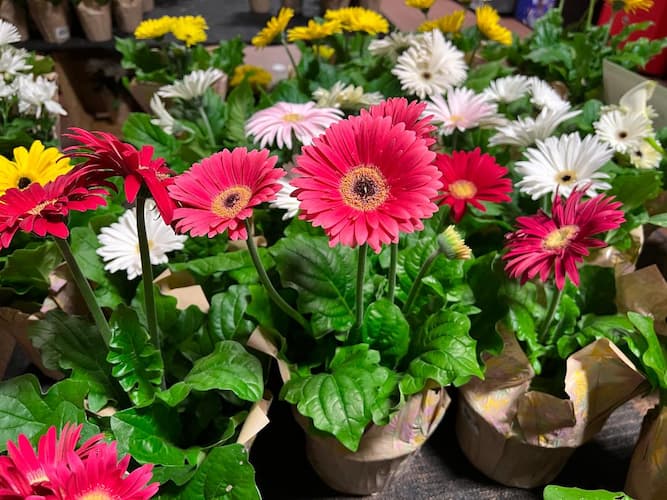
About Growing Gerber Daisy Flowers in Your Home Garden
Gerber Daisies are bright, bold, and absolutely beautiful. Also called “Gerbera Daisy”, you may be surprised to know they are not actually a daisy at all. Rather, they are a member of the Aster family. This plant gets its name from its two to five-inch, daisy-like blooms. Native to South Africa, this plant is a perennial that is often grown as an annual in colder climates. This guide on “How to Grow Gerber Daisies” will help you to grow beautiful plants in your flower garden, on your deck, or even indoors.
Gerber Daisy flowers grow impressive blooms on tall, sturdy stems above lush, fuzzy green leaves. You will love them displayed in flowerpots on your patio or deck. Their bright vivid colors brighten your outdoor living and relaxation place all summer long.
Gerber Daises make great cut flowers. Growing on sturdy stems, the bright colors will cheer up any room in your house.
Gerber Daisies Plant Specifications
Flowers Colors: Orange, pink, red, white, and yellow.
Flowers Bloom: Summer to early Fall
Days to First Bloom: 14 to 18 weeks after planting seeds.
Plant height: 8 to 24 inches tall.
Light Requirements: Full Sun to Partial Shade.
Ideal Soil pH: 5.5 – 6.5
Toxic?: Non-toxic
Deer Resistant?: Somewhat. Deer will eat them if other preferred foods are scarce.
Hardiness Zones: 8 – 11
Other Names: Transvaal Daisy, Gerbera Daisy
Plant Type: Perennials, Gerbera Jamesonii
Are Gerber Daisies Edible?
YES, Gerber Daisies are edible!! However, it is important to note that not all varieties of daisies are edible. So, do your research and know which ones are edible before chowing down on daisy leaves or petals.
Gerber Daisy flowers are tough and bitter-tasting. So, people do not eat the leaves. But. the leaves are high in vitamin C. They are often used in salads or as a garnish.
Also, it is important to note, that people with allergies may be allergic to them. Therefore, the first time you eat them, try just a little. Then, look to see if you have a reaction.
Medicinal Uses for Gerber Daisies
Here are some of the medicinal uses for Gerber Daisies:
- The plants have high levels of allantoin. This chemical compound promotes the healing of wounds.
- Antimicrobial properties fight bacterial and fungal infections.
- The plant has anti-inflammatory properties.
Light Requirements
Grow the plants in full sunlight to partial shade. In cooler regions of the country, they will grow best in full sunlight. However, in hotter areas of the country, provide light afternoon shade during the hottest, most intense sunlight.
When grown in flowerpots on your patio or deck, you can move them into the shade during the hot, midday heat of midsummer in July and August. During the remainder of the year, they will grow fin in full sunlight.
Gerber Daisy Flower Propagation
Gerbera Daisies are grown from seeds. Plant seeds directly into the garden or start plants indoors. For indoor starts, sow seeds 10-12 weeks before the last frost date for your area. Sow seeds lightly or press lightly into the soil. The seeds need light to germinate.
Transplant seedlings into their outdoor summer home after all chance of frost has passed.
Garden Tip: Use peat pots or pellets, as the plant does not like to have its roots disturbed when transplanting.
Days to Germination: 10 – 20 days, depending upon the variety.
The crowns of established plants tend to sink down into the soil. This can cause crown rot, especially in wet soil. Dig up and re-plant them as needed.
The plants can also be propagated, by division. Dig up plants, separate them into clumps, and re-plant the clumps. As previously mentioned, it is important to plant the crowns above the soil level.
Plant Spacing: Plant Gerber Daisies 18 to 24 inches apart.
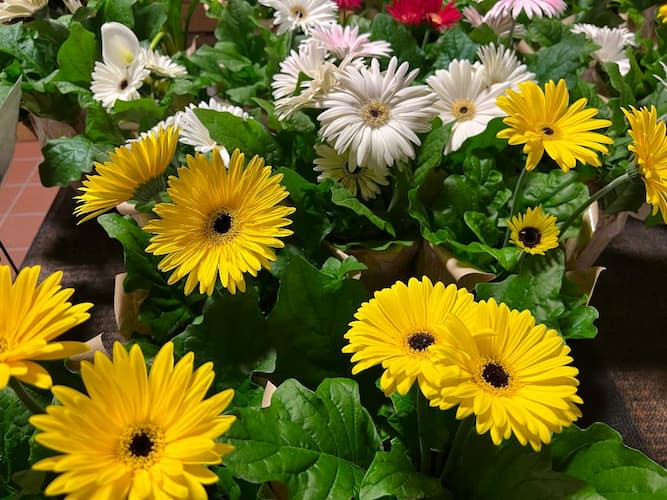
How to Grow Gerber Daisies
Grow Gerber Daisies in full sun. However, in hot regions, plant in an area that offers partial shade from the hot afternoon sun.
The plants grow best in rich, highly organic soil that is well-drained soil. Mix in a generous amount of compost when planting them.
Weed around plants when young. Also, apply a thick layer of mulch to help keep the weeds down and to retain soil moisture.
Apply a general-purpose fertilizer once a month. Start with a high nitrogen fertilizer. Then, switch over to a high Phosphorous formula just before blooming. This helps to promote blooms. Also, use liquid fertilizer on both garden and container-grown plants.
Water the plants, especially in dry weather. Apply water deeply. Then, allow the top of the soil to dry before watering again.
Gerber Daisies look great in flowerpots on your patio or deck. Use flowerpots with a hoe in the bottom for good drainage. They need water on a regular basis. During hot dry weather, they need water every day or two. With limited nutrients in the flowerpot, use a liquid fertilizer every two weeks. Or, use fertilizer spikes.
Pruning Gerber Daisy Plants
Maintain the health and appearance of the plant by pruning as needed. Remove dead and unhealthy leaves and branches.
Deadhead spent flowers to promote continuous blooms. Cut flower stems back to where it meets the plant branch. Of course, if you are regularly cutting flowers for indoor vases, you won’t need to deadhead plants too often.
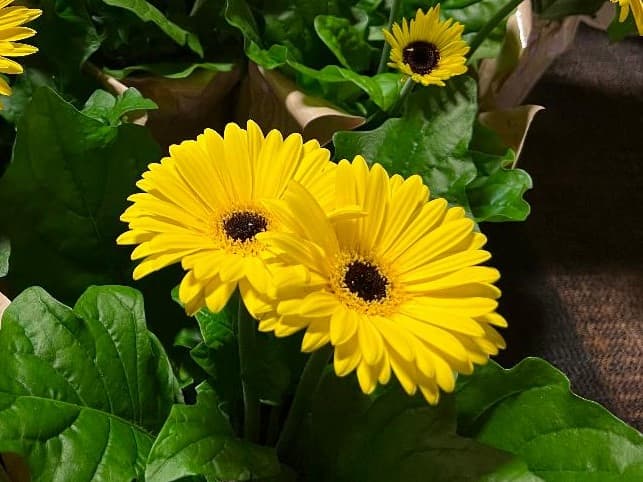
Over Wintering Gerber Daisy Plants
In warmer climates, you can continue to grow Gerber Daisy perennials all year round. However, they are a somewhat tender perennial. In colder regions, many gardeners grow it as an annual. In these areas, you can dig up plants and put them into a flowerpot to grow indoors during the winter.
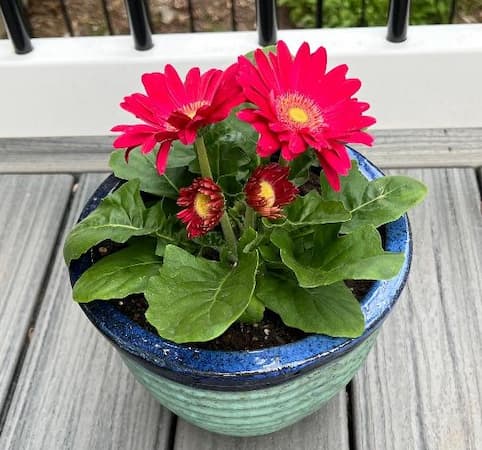
How to Grow Gerber Daisies Indoors
Gerber Daisies are not an easy plant to grow indoors. It needs lots of sunlight, which often isn’t available indoors.
First, put the plant in a flowerpot, if it is not already in one. Then, check carefully for insects, prior to bringing it indoors. Next, gradually decrease the amount of sunlight it receives over the course of a couple of weeks.
Finally, put the flowerpot in the sunniest location in your home.
More on Bringing Plants Indoors for the Winter.
Also. be prepared for Plant Leaf Drop. It is common when bringing plants indoors from a warm and sunny location.
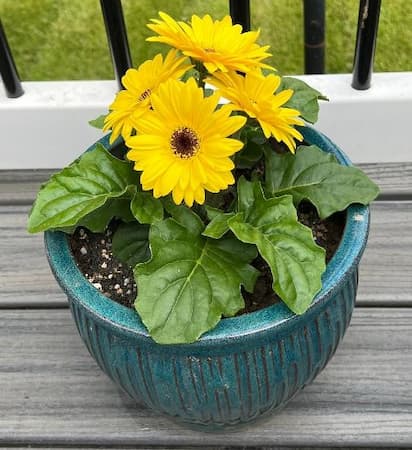
Gerbera Daisies Insects and Plant Disease Problems
Spider mites and thrips are common problems. Try insecticidal soaps and garlic insect sprays and other organic insect repellents before turning to harsher chemical insecticides.
Powdery mildew can be a problem in hot and humid weather. Apply fungicides early to control this problem.
Black spots and patches on leaves is indicative of a low sol ph.
The plant crowns rot in wet soils.
Also see: Plant Problems – Identify the causes and find the cures.
Related Articles
People who read this article will also like:
How to grow Daisies – by Garden Hobbies
Deadheading Spent Blooms – Deadheading encourages some plants to produce new blooms. And, it gives a neat and tidy plant appearance.
Please support our site. Shop for:
- rmmatthews100@hotmail.com
- 585-721-6528
- Rochester, NY
©1999-2024 GardenersNet.Com, All Rights Reserved

